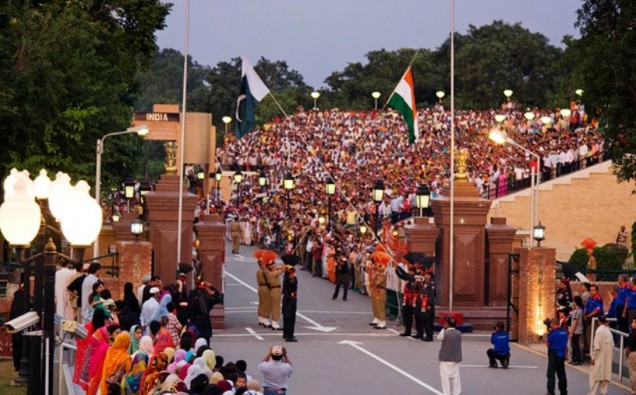
Sapna Devi, a businesswoman from Indian state of Gujarat, is confident of a good response from Pakistani market for the women wear products she showcased at a regional Trade Fair in Lahore. To her, the issue of India-Pakistan rivalry is just in the cyberspace and that the Janta (people) of both the countries have love for each other.
The traders from Bangladesh, the country presently at loggers head with Pakistan on different issues especially the executions of pro-Pakistan politicians, are also optimistic about prospects of expansion in trade between the two countries.
Muhammad Rizwan, a Muslim trader from the Sri Lankan capital Colombo has ambitions to have a sizable share of sales of his Sapphire stone products in the large Pakistani market.
The participants expressed these views at the 12th SAARC (South Asian Association for Regional Cooperation) Trade Fair, organized in Pakistan after hectic efforts over the last three years. The event was apparently a promising activity for the future of South Asian regional bloc that was formed 30 years ago on 8 December 1985.
But these feelings and aspirations of friendship and mutually beneficial trade expansion do not find reflection on the ground, where the reality of political and security disputes hold a veto.
The SAARC grouping brings together Afghanistan,Bangladesh, Bhutan, India, Maldives, Nepal, Pakistan and Sri Lanka. South Asia is considered among least integrated regional zones with only 5 percent intra-regional trade. According to estimates by the Asian Development Bank, total volume of international trade of the region is around US $ 550 billion while the intra-regional trade is not more than US $ 25 billion.
In contrast with SAARC’s 5 percent, intra-regional trade in European Union is at the lofty level of 55 percent, followed by 52 percent in NAFTA and 30 percent in neighboring ASEAN region.
The low economic integration trend in SAARC region persists despite the signing of free trade agreement among the member countries. South Asian Preferential Trade Agreement (SAPTA) was signed in 1993 while SAFTA came into force in the year 2006.
But these agreements have remained just pieces of paper as the region is embroiled in a myriad of bilateral political disputes. The member countries have little time to think of any effort for regional integration.
India, the largest economy and the country that shares borders with most of the SAARC countries, has always some political or diplomatic row with the neighbors. With Pakistan, it has decades-old dispute over Jammu and Kashmir, an unresolved question that keeps the entire region a hostage. Consequently, direct bilateral trade between Pakistan and India is just US$ 2.5 billion while the same volume of trade is being carried out through third countries like the United Arab Emirates and Singapore.
Economists believe that the removal of tariff and non-tariff barriers can help increase the India-Pakistan trade to US $ 10 billion within no time.
Relations between India and Nepal are also sour as the latter ,a landlocked country, is presently experiencing an economic blockade imposed by New Delhi. Sri Lanka and Bangladesh have also faced similar problems while dealing with India in the past, though a recent treaty on resolving a border dispute between India and Bangladesh promises some improvement.
The intra-regional trade has the potential to rise to the level of US $ 100 billion. Long communiqués at the end of the SAARC Summits or holding of trade shows may not bring any substantial change in the economic well-being of the region that is, presently home to almost 20 percent poor of the world.
As first steps toward facilitating the trade, all member countries will have to soften the visa regimes and remove the tariffs, and encourage initially the suite case trade that may entail the formal consignments across the borders.
The blame game on obstacles will only prolong this suspension of trade prospects. India may be feeling relatively comfortable with its high growth and bigger size of the economy but it has to partner with its neighbors for sustainable development of the region and if 400 millions of Indians and millions of South Asians are to wriggle out of the vicious circle of poverty and ignorance.
Prime ministers Narendra Modi and Nawaz Sharif have a responsibility to put their two largest countries on the path toward regional connectivity and economic integration.
If carried forward with a strong commitment to a peaceful region, this week’s meetings between top foreign ministry and security officials of India and Pakistan may prove to be long-awaited steps that may help ease tensions and set the pace for a meaningful SAARC cooperation.
Featured Image on the top is Wagah Border trade and travel crossing
Photo Credit: Kamran Ali via Wikimedia Commons














